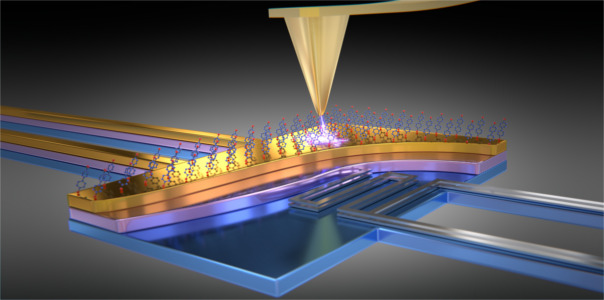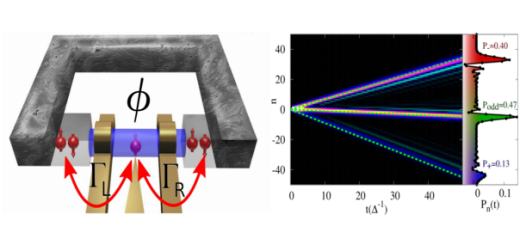Peltier Cooling in Molecular Junctions
Article: published in Nature Nanotechnology by Linda Angela Zotti, member of the Department of Theoretical Condensed Matter Physics and Juan Carlos Cuevas, IFIMAC researcher and member of the Department of Theoretical Condensed Matter Physics.
Thermoelectric cooling is based on the Peltier effect that consists in the generation of a reversible heat flow in response to the passage of an electrical current. Thus, depending on the direction of the electrical current in a junction, one can cool down an electrode at the expense of heating up the other one. Thermoelectric or Peltier coolers have many applications, especially in electronics, and they possess several advantages over conventional vapor-compression refrigeration systems, although they are typically less efficient than these latter ones. In the context of nanoscale systems, a lot of attention has been devoted to the study of thermoelectricity in molecular junctions with the hope, in particular, to increase the efficiency of Peltier cooling. However, in spite of the fact that a lot of progress has been made in probing related phenomena such as the Seebeck effect (the conversion of a temperature difference into an electrical current), the observation of Peltier cooling in molecular junctions has remained inaccessible thus far.
This fundamental problem has now been resolved in a work published in Nature Nanotechnology by a collaboration between the groups of Pramod Reddy and Edgar Meyhofer (University of Michigan) and the members of our department Linda Angela Zotti and Juan Carlos Cuevas. In this work, these researchers report for the first time the direct observation of Peltier cooling in molecular junctions. This observation was possible due to the use of a novel experimental platform that combines conducting-probe atomic force microscopy with home-built calorimetric micro-devices with picowatt resolution. This platform enables the simultaneous measurement of electrical, thermoelectric and energy dissipation characteristics of molecular junctions. Using this platform, molecular junctions formed with gold electrodes and a variety of organic molecules were investigated. Such studies revealed not only the possibility to achieve molecular-based refrigeration, but they also showed the close relationship between heating or cooling and the transmission characteristics of these junctions. In particular, it was shown that the Peltier cooling can be tuned and optimized by an appropriate choice of the molecular architecture, and all this in exquisite agreement with density-functional-theory-based calculations performed in the framework of the Landauer approach for quantum coherent transport.
The advances reported in this work are expected to stimulate the exploration of atomic- and molecular-scale thermal transport and the quantification of the thermoelectric figure of merit in a variety of interesting molecules, nanostructures and materials. [Full article]
Reference
- Peltier Cooling in Molecular Junctions, L. Cui, R. Miao, K. Wang, D. Thompson, L.A. Zotti, J.C. Cuevas, E. Meyhofer, P. Reddy, Nature Nanotechnology, doi:10.1038/s41565-017-0020-z, (2017). [URL]




















